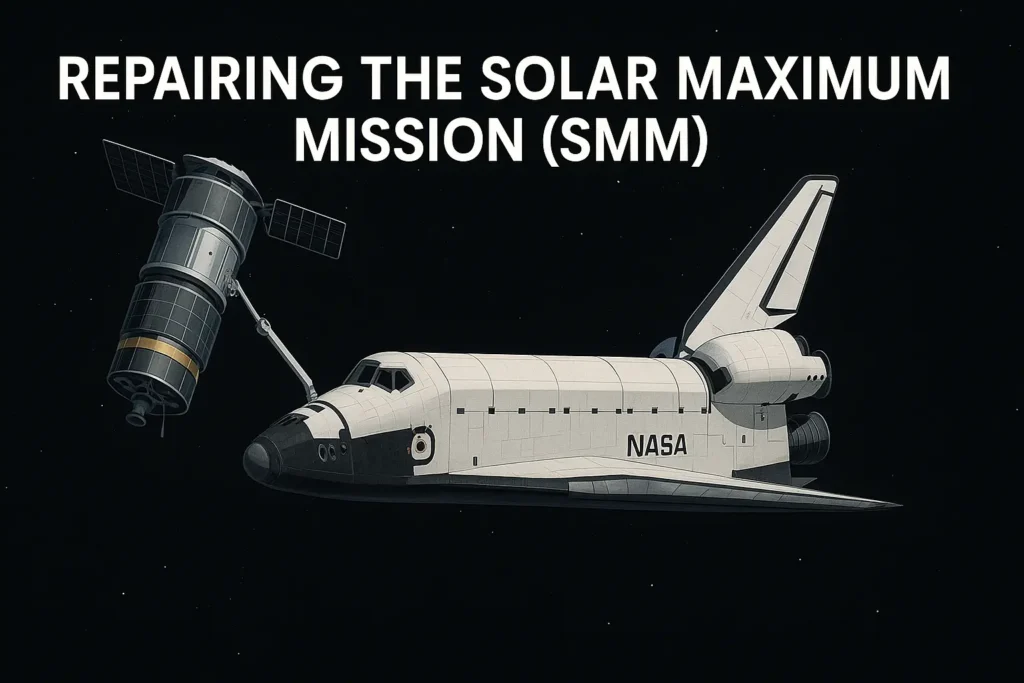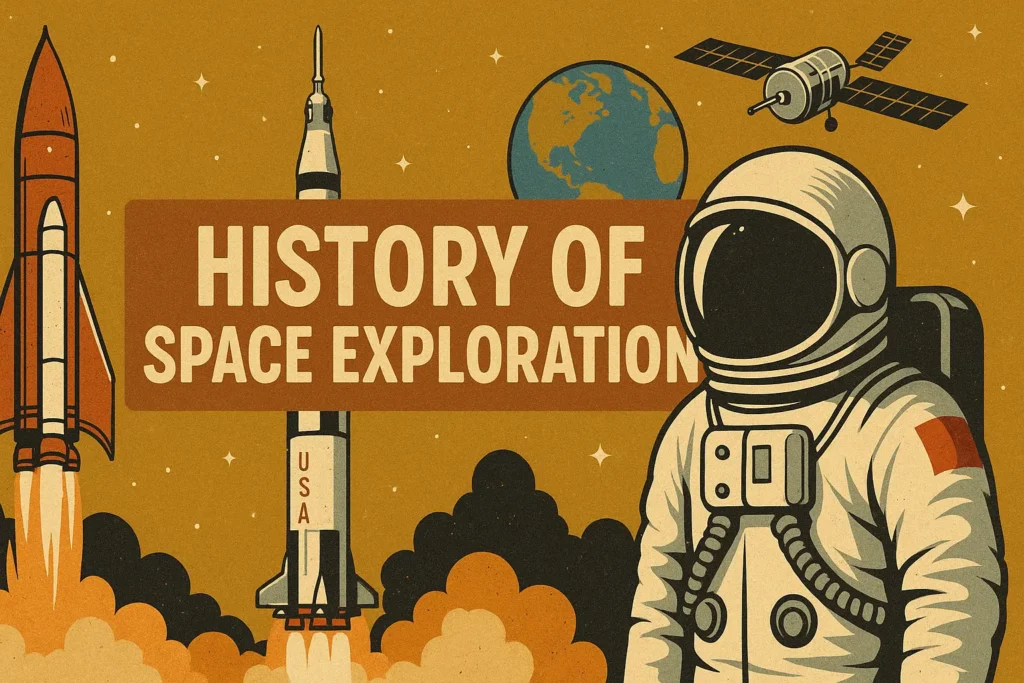In 1984, NASA achieved a groundbreaking milestone in the history of space exploration: the first-ever repair of a satellite in orbit. This remarkable mission, centered around the Solar Maximum Mission (SMM) satellite, demonstrated that human astronauts could successfully capture, repair, and redeploy spacecraft in space. This achievement not only saved a vital solar research satellite but also paved the way for future missions like the Hubble Space Telescope servicing missions.
Background: The Solar Maximum Mission (SMM)
- Launch Date: February 14, 1980
- Primary Goal: Study the Sun during its solar maximum period, observing solar flares, sunspots, and coronal mass ejections.
- Instruments: Carried advanced X-ray, ultraviolet, and gamma-ray sensors.
However, just months after its launch, in November 1980, SMM suffered a critical failure in its attitude control electronics. Unable to properly orient itself, the satellite went into safe mode, spinning in orbit and unable to carry out scientific observations.
The Rescue Mission: STS-41-C (Space Shuttle Challenger)
NASA’s plan to save the Solar Max satellite involved Space Shuttle Challenger on mission STS-41-C, launched on April 6, 1984. The crew consisted of:
- Robert L. Crippen – Commander
- F. Richard Scobee – Pilot
- George D. Nelson – Mission Specialist
- James D. van Hoften – Mission Specialist
- Terry J. Hart – Mission Specialist
Their objectives were to capture SMM, perform in-orbit repairs, and release the satellite back into service.
Step 1: Capturing Solar Max
The initial plan was for astronaut George Nelson to use the Manned Maneuvering Unit (MMU) and a Trunnion Pin Acquisition Device (TPAD) to manually capture SMM. However, the satellite was spinning more than expected, and two attempts failed.
The crew quickly switched to a backup plan: using the Shuttle’s robotic arm (Canadarm). Astronaut Terry Hart successfully grappled SMM, allowing it to be secured in the payload bay.
Step 2: In-Orbit Repairs
Once captured, the crew conducted spacewalks (EVAs) to repair the satellite. Key repairs included:
- Replacing the attitude control electronics module
- Swapping out a fuse to restore full functionality
After repairs, SMM was redeployed on April 11, 1984 and operated successfully until 1989.
Significance of the 1984 Solar Max Repair
- First Satellite Repair in Space – STS-41-C proved that on-orbit servicing was possible.
- Extended Satellite Lifespan – SMM’s repairs allowed five more years of valuable solar research.
- Paved the Way for Hubble Repairs – Techniques and lessons learned from SMM were critical for the 1993 Hubble Space Telescope Servicing Mission.
This mission demonstrated the versatility of the Space Shuttle and opened a new chapter in the concept of satellite servicing, influencing future programs for decades.



